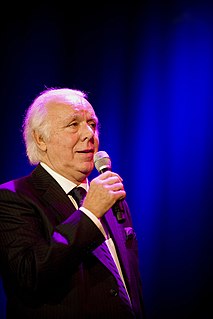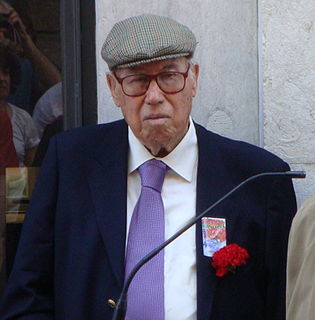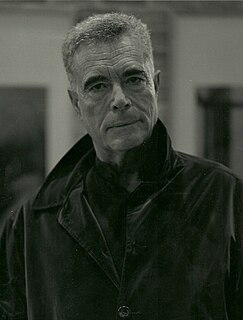
The Carnation Revolution, also known as the 25th of April, was initially a 25 April 1974 military coup in Lisbon which overthrew the authoritarian Estado Novo regime. The revolution began as a coup organised by the Armed Forces Movement, composed of military officers who opposed the regime, but it was soon coupled with an unanticipated, popular civil resistance campaign. The revolution led to the fall of the Estado Novo, the end of 48 years of authoritarian rule in Portugal, and Portugal's withdrawal from its African colonies.

The Portuguese Communist Party is a major political party in Portugal. It is a Marxist–Leninist party, and its organization is based upon democratic centralism. The party also considers itself patriotic and internationalist.

Marcello José das Neves Alves Caetano was a Portuguese politician and scholar, who was the last prime minister of the Estado Novo regime, from 1968 until his overthrow in the Carnation Revolution of 1974.

The PIDE or International and State Defense Police was a Portuguese security agency that existed during the Estado Novo regime of António de Oliveira Salazar. Formally, the main roles of the PIDE were the border, immigration and emigration control and internal and external State security. However, it became more known by its secret police activities.

The 25 de Abril Bridge(Ponte 25 de Abril, 25th of April Bridge, Portuguese pronunciation: [ˈpõt ˈvĩt i ˈsĩku ðɨ ɐˈβɾiɫ]) is a suspension bridge connecting the city of Lisbon, capital of Portugal, to the municipality of Almada on the left (south) bank of the Tagus river. It was inaugurated on August 6, 1966, and a train platform was added in 1999. It is often compared to the Golden Gate Bridge in San Francisco, US, because they are both suspension bridges of similar color. It was built by the American Bridge Company which constructed the San Francisco–Oakland Bay Bridge, but not the Golden Gate. With a total length of 2,277 metres (7,470 ft), it is the 32nd largest suspension bridge in the world. The upper deck carries six car lanes, while the lower deck carries a double track railway electrified at 25 kV AC. Until 1974, the bridge was named Salazar Bridge. The name "25 de Abril" commemorates the Carnation Revolution.

António Sebastião Ribeiro de SpínolaGCTE ComA was a Portuguese military officer, author and conservative politician who played an important role in Portugal's transition to democracy following the Carnation Revolution.

The Portuguese Constituent Assembly election, 1975 was carried out in Portugal on 25 April 1975, exactly one year after the Carnation Revolution. It was the first free election held in Portugal since 1925, and only the seventh free election in all of Portuguese history. Turnout was a record 91.66 percent, which remains the highest ever in any Portuguese democratic elections.
Francisco da Costa Gomes, ComTE, GOA was a Portuguese military officer and politician, the 15th President of the Portuguese Republic.

Fernando José Salgueiro Maia, GOTE, GCL, commonly known just by Salgueiro Maia, was a captain of the Portuguese army. He made a significant contribution to the Carnation Revolution, which resulted in the fall of the then-ruling dictatorship.

Otelo Nuno Romão Saraiva de Carvalho, GCL, is a retired Portuguese military officer. He was the chief strategist of the 1974 Carnation Revolution in Lisbon. After the Revolution, Otelo assumed leadership roles in the first Portuguese Provisional Governments, alongside Vasco Gonçalves and Francisco da Costa Gomes, and as the head of military defense force COPCON. In 1976, Otelo ran in the first Portuguese presidential election, in which he placed second with the base of his support coming from the far-left. In the 1980s Otelo was accused of having involvement with the controversial Forças Populares 25 de Abril.

Carlos Manuel de Ascenção do Carmo de Almeida ComIH better known as Carlos do Carmo is a Portuguese fado singer, one of the finest of the "Lisbon Song". He is the son of Lucília do Carmo, a well known fadista of her time. (Lucília Nunes de Ascenção do Carmo, born in Portalegre on 4 November 1919 and died in 1999, daughter of Francisco).
April Captains is a 2000 film telling the story of the Carnation Revolution, the military coup that overthrew the fascist dictatorship in Portugal on 25 April 1974. Although dramatised, the plot is closely based on the events of the revolution and many of the key characters are real - such as Captain Salgueiro Maia and Prime Minister Marcelo Caetano.
Licínio Pereira da Silva was a former Portuguese political prisoner under the regime of António de Oliveira Salazar, an era of Portuguese history known as the Estado Novo. Pereira da Silva was the last political prisoner convicted by the Polícia Internacional e de Defesa do Estado, better known as the PIDE, the secret service force used by the Salazar regime to repress dissent during the Estado Novo.

Verde por fora, vermelho por dentro is a 1979 Portuguese feature film directed and produced by Ricardo Costa.

Celeste Martins Caeiro, also known as Celeste dos cravos is a Portuguese pacifist restaurant worker. Her actions led to a 1974 coup being known as the Carnation Revolution.

Edmundo Pedro was a Portuguese politician and antifascist, as well as the founder and former leader of the Socialist Party (PS). An opponent of António de Oliveira Salazar's Estado Novo regime and political prisoner during the 1930s and 1940s, Pedro later served as a member of the Assembly of the Republic's I, III and V legislatures following the end of Salazar's regime.
























